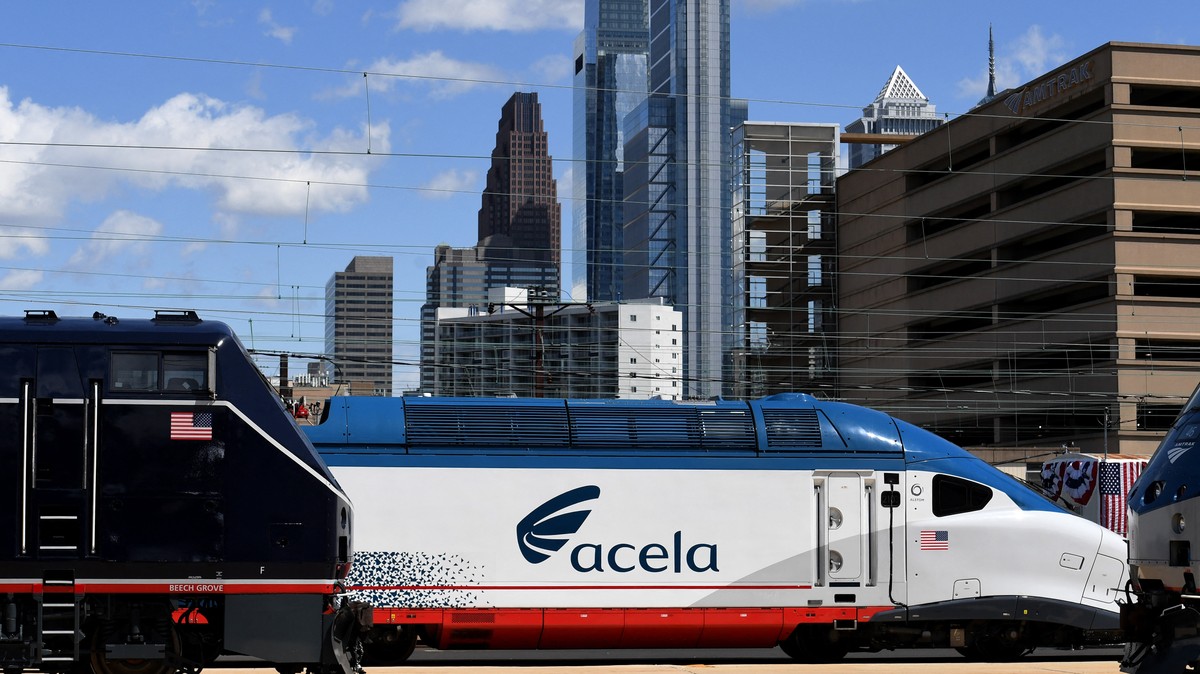The flagship Acela fleet may have to cut service because Amtrak is running out of spare parts and using unsupported software on critical components while the new fleet is nowhere close to entering service.
A scathing new report paints a bleak picture of Amtrak’s highly profitable Acela route: trains are running out of spare parts, the new fleet is years delayed and not even close to entering service, and the current fleet is being maintained by harvesting the corpses of old trains and running unsupported software on old circuit boards made by companies that no longer exist.
The report, released this week by the Amtrak Office of Inspector General, indicates that Amtrak may have to run less service on the Acela route from Washington D.C. to Boston via New York… It calls into question the agency’s ability to buy new trains while keeping to a schedule, even as it is in the midst of its most expensive train orders in history to replace a huge swath of the existing fleet thanks to an injection of funds from the 2021 Bipartisan Infrastructure Act.
In 2016, Amtrak bought 28 new train sets from Alstom to replace the current Acela fleet, which is now 25 years old. The train order, which cost $2.5 billion in total (including upgraded rail yards and maintenance facilities) and have a larger capacity than the current fleet and can go 10 mph faster, were supposed to enter service starting in 2021. That never happened.
According to the Amtrak OIG report, Alsom has made 12 of the train sets as well as 22 of the 28 café cars, but they all have defects, including windows that shatter “spontaneously.” But the report notes it is common for new train sets to have defects.
Alstom spokesperson Clifford Cole said in a statement, “We are surprised with the so-called ‘defects’ that the OIG report identifies” and added that the “modifications” Amtrak has requested “are in no way in the critical path of completion of this project.”
The bigger problem that is causing the years of delay has to do with the way new trains are tested before entering service. The new Acela fleet uses a tilt-technology familiar to anyone who has ridden high-speed rail in Europe or Asia that allows the trains to round bends at more extreme angles. Because this is the first fleet to use that technology in the U.S., the Federal Railroad Administration has stringent testing requirements to ensure it is safe. This includes the use of advanced computer modeling before running the trains on the tracks.
According to the Amtrak OIG report, the computer model is the source of the hold-up. Alstom built most of the trains before the model was ready and the FRA still has not approved it. The most recent model submitted to the FRA in July, the 14th attempt, was in some ways worse than previous models, according to the report. Until the FRA validates the model, the trains cannot move forward with real-world testing, much less be put into service.
The report is critical of Amtrak and Alstom for allowing the trains to be built before the model was complete, as well as for not allowing Department of Transportation officials to view the model’s source code to help Alstom get it into shape. Alstom has declined to do so citing trade secrets, according to the report.
Cole, the Alstom spokesperson, said the company is “the world leader in high-speed trains” with 2,300 such trains in service with Alstom parts and technology. Cole said the company is working closely with Amtrak to get them into service. Cole disputed that it is unusual to build trains before the validation of the testing model.
The Amtrak OIG paints a dim picture of Acela service in the coming years. Amtrak’s latest announcement said the new trains would enter service in 2024, but the report implies that is unlikely (the subtitle of the report includes the phrase “Additional Delays and Cost Increases are Likely”). In an addendum to the report, Amtrak management said it agreed with the report’s findings and recommendations.
Moreover, the current Acela fleet is being maintained with spare parts harvested from old trains. Some of the companies that made parts that go into the current fleet no longer exist. The software used to run the train control system on the current Acela fleet is from the mid-1990s and the circuit board that runs the software was made by a company that no longer exists. Delays and trip unreliability are likely to increase as these fleets are duct-taped together while the new, untested fleet sits in the Philadelphia station rail yard.



While it is a shame the new trains are delayed, it’s very informative and unfortunate to discover their most profitable train line is using hardware from the 90s… that they can barely keep running… because the manufacturer went out of business.
There should be some deal in place for these manufacturers to transfer essential documentation to customers in the instance that they collapse IMO, like schematics for electronics, source code for hardware etc.
Personally I would be very uncomfortable as a director, knowing that the only cash cow is literally in the hands of thankless engineers doing the impossible with technology that is three decades old, with no documentation… and if anything goes wrong there’s no fallback plan apart from chopping up the old trains for more parts
Why not just have the transfer of that happen when they sign the contract? I don’t see why the government having schematics is an issue, if they provide a good service, the government won’t ever need to go elsewhere for service.